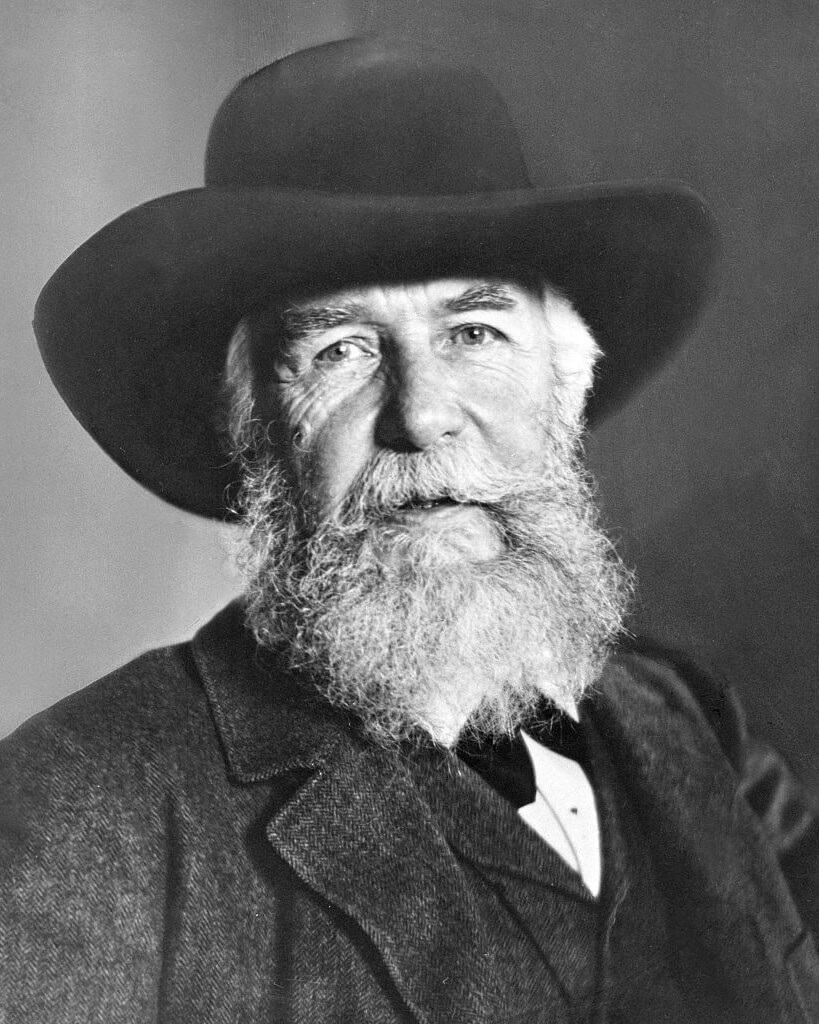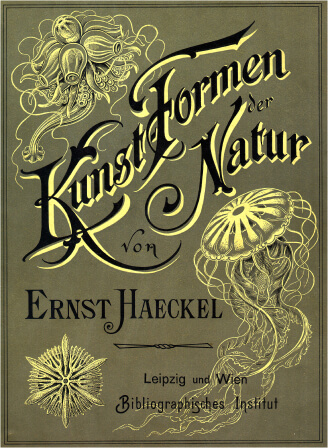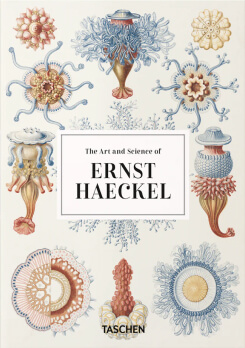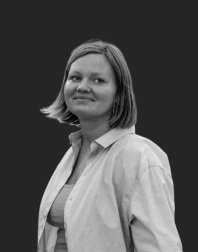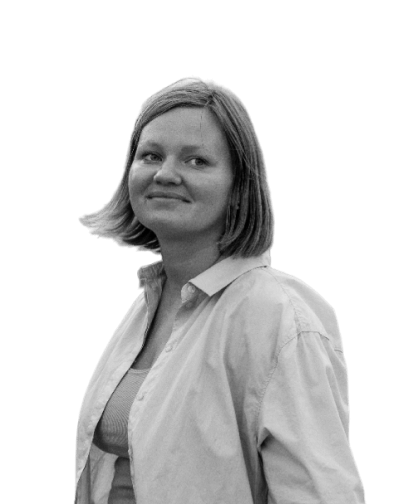
ART & SCIENCE
ERNST HAECKEL
DISCOVER ERNST HAECKEL, THE ARTIST-BIOLOGIST WHO FOUND BEAUTY IN EVEN THE MOST UNLIKELY OF CREATURES
Ernst Heinrich Philipp August Haeckel (1834-1919)
German biologist, naturalist, evolutionist, professor, artist, philosopher, and physician who devoted his life to the study of flora and fauna from the highest mountains to the deepest oceans. He discovered, described, and named thousands of new species, mapped a genealogical tree relating all life forms, and introduced many terms in biology, including ecology, phylum, phylogeny and Protista.
The published artwork of Haeckel includes over 100 detailed, multi-colour illustrations of animals and sea creatures, collected in his Kunstformen der Natur ("Art Forms of Nature"), a book which would go on to influence the Art Nouveau artistic movement.

Thalamophora
Haeckel with Nicholai Miklukho-Maklai, his assistant
Ernst Haeckel
Parmelia caperata
DESPITE THE HIGH ARTISTIC VALUE OF GECKEL'S WORKS, THEIR MAIN PURPOSE WAS SCIENTIFIC; IN SCIENCE HE ACHIEVED OUTSTANDING RESULTS AND RECEIVED SEVERAL IMPORTANT AWARDS
Cothenius Medal, 1864
RECOGNITION
Linnean Medal, 1894
Darwin Medal, 1894
HAECKEL'S BESTSELLER, WHICH WAS ON THE VERGE OF SCIENCE AND ART AND WAS A GREAT SUCCESS IN SOCIETY AT LARGE, NOT JUST AMONG SCIENTIFIC SPECIALISTS
Pampelia stellaris
Cover of the complete 1904 edition
LITHOGRAPH BOOK
"ART FORMS IN NATURE"
Kunstformen der Natur — Ernst Haeckel's lithographic book. Originally published from 1899 to 1904 in sets of 10 prints, the full version of 100 prints was published in 1904. Many of the organisms depicted in the book were first described by Haeckel himself. In all, more than 1000 engravings were made from Haeckel's sketches and watercolor sketches, the best of which were selected for the book and converted to print by the lithographer Adolf Glitsch.
Kunstformen der Natur proved, indeed, to be one of Haeckel's "bestsellers". One reason for this lies perhaps in the thematic range of this publication. For here, in addition to revealing the beauties to be found in the depths of the ocean, Haeckel devoted many plates to plants and animals to be found on land. Nor did he overlook fossils.




Licmophora flabellata

HAECKEL devoted much of his research to unicellular organisms, described many of them for the first time, and created stunning illustrations based on what he saw in his microscope
WORLD UNDER THE MICROSCOPE
RADIOLARIA
One of Haeckel's main interests was Radiolaria (literally: radials). Before he had embarked on his own research, 58 species of Radiolaria had been identified and described. Haeckel was eventually able to register 144 new species and 47 new genera.
Discoidea (Radiolaria)
In 1862, Haeckel published his monograph on Radiolaria, Die Radiolarien (Rbi-zopoda radiolaria), with its 35 splendid plates. In the opinion of the Halle anatomist Max Schultze in a letter to Haeckel, this was, in artistic terms, "[...] the finest of scientific works on the lesser animals ever to be produced, and find myself undecided as to whether to feel more astonished by nature itself and its capacity to bring forth such diversity and beauty of forms, or by the hand of the draughtsman in his ability to capture such magnificence on paper".
Phaeodaria (Radiolaria)
Diatoms
A group of unicellular algae characterized by the presence of a "shell" composed of silicon dioxide. In his works, Heckel depicted the diversity of diatom shells, revealing the beauty of their structure, which is not visible to the naked eye.



Pirgodiscus armatus
Crovea pedalis
Amphithetras elegans
Stephoidea (Radiolaria)
Phaeodaria (Radiolaria)
Discoidea (Radiolaria)
Discoidea (Radiolaria)
Phaeodaria (Radiolaria)

Polycyttaria (Radiolaria)

The Washington Post
"IT'S SCIENTIFIC EYE CANDY THAT FEELS AS FRESH AS hAECKEL'S GROUNDBREAKING BIOLOGICAL ART MUST HAVE SEEMED MORE THAN A CENTURY AGO"

Navicula bullata
Cyrtoidea (Radiolaria)
Triceratium robertsianum

Brachiolophus collaris
Pilema Giltschii
Cannorrhiza connexa



MARINE BIOLOGY was HAeckel's greatest fascination, with most of his monographs and scientific papers focusing on marine life
MARINE ORGANISMS
SPONGES, CORALS, POLYPS, MOLLUSKS AND OTHER SEA CREATURES
In 1899, Ernst Haeckel embarked on the publication of a series of what were eventually to number 100 splendid plates depicting diverse groups of organisms. When finishing his work in 1904, he wrote of this undertaking: "The chief purpose of my Kunstformen der Natur was aesthetic. I wishes to make accessible to far more of the educated general public those marvellous treasures of beauty that lie hidden in the depths of the ocean or which, on account of their diminutive size, can be viewed only through a microscope. Associated with this purpose, however, was the scientific aim of conveying an insight into the truly astonishing structure of the the organization of these natural forms".
Talamophora (Foraminifera)
Ascidiae (Tunicata)
Tetracoralla (Cnidaria)
Bryozoa (Moss animals)


jellyfish
Haeckel's delving into marine biology began with jellyfish. No animals so exercised such a power of attraction on him as did the jellyfish.
"I will never forget the rapture with which I then, as a 20-year-old student, observed my first Tiara and Irene, my first Chrysaora and Cyanea, and sought with my brush to record their splendid forms and colours".

Gorgonida (Cnidaria)
Hexacoralla (Cnidaria)
Pilema Giltschii
Pilema Giltschii
Phopilema Frida



Discomedusae (Cnidaria)



Syphonophorae (Cnidaria)
Ammonitida (Mollusca)
In his Postscript to the full series of plates Haeckel explained that he had intended "to combine exquisite beauty with the greatest possible truth to nature. Accordingly, all the 'art forms' presented here are forms that really exist in nature; and any sort of idealisation and stylisation has been eschewed."
Thanks to the decorative elaboration of his own drawings by his lithographer Adolf Giltsch, Haeckel believed that his plates would provide inspiration for both artists and craftsmen. As he also observed in his Preface: "[...] the visual arts of our own day, as well as the powerfully emerging applied arts, will find a wealth of new and beautiful motifs in these true 'art forms of Nature'." And it really happened.
Discomedusae (Cnidaria)
Thalamophora (Foraminifera)
Acephala (Mollusca)
Thalamophora (Foraminifera)
Echinoderms
Asteroblastus stelastus

Asteroblastus volborthy

Orophocrinus
stelliformis
stelliformis
Pentremites orbignyanus


Blastoidea
The extinct type of stemmed echinoderm that lived from the Ordovician to the Permian period. Haeckel illustrated them on the basis of fossils, as did some other extinct marine species.
Ophiodea (Echinodermata)




Tetracoralla (Cnidaria)
Echinidea (Echinodermata)


Amphoridea (Echinodermata)
Le Monde
"A DRAZZLING GRAPHIC WORK... oNE IS LEFT ASTOUNDED BY THESE MEMERIZING WONDERS."

Echinidea (Echinodermata)
Elaeacrinus
olivanites
Asteroblastus stelastus

Ophiodea (Echinodermata)

ARTISTS, ARCHITECTS, DESIGNERS, AND CREATORS OF HAUTE COUTURE ACTIVE AROUND 1900 DREW INSPIRATION FORM hAECKEL; AND SEVERAL GENERATIONS OF THEIR SUCCESSORS HAVE CONTINUED TO DO SO SINCE
EVOLUTION OF MODERN ART
GLASS MODELS BY LEOPOLD AND RUDOLPH BLASCHKA
The glass models made near Dresden by the workshop of the Blaschkas — Leopold and his son, Rudolf — are still regarded as masterpieces of both art and science. They were in regular communication with Haeckel, who was always ready to advise them on scientific matters. Museums of natural history the world over acquired these precious objects; and the largest collection of Blaschka models is now to be found at Harvard University.
chandeliers inspired by jellyfish
"look deep into nature, and then you will understand everithing better"
Phaeodaria (Radiolaria)
Albert Einstein
The jellyfish described and illustrated by Haeckel became the inspiration for chandeliers in famous buildings in Europe. The French sculptor Constant Roux used them to design blown-glass chandeliers for the museum at the Institute of Oceanography in 1900. The Dutch architect Hendrik Petrus Berlage designed a chandelier of forged brass for Amsterdam's famous "Beurs van Berlage" in 1903, which was also inspired by Haeckel's illustrations.
Jellyfish model
Porte Monumentale
Jellyfish model
PORTE MONUMENTALE
Radiolarians were at the beginning of Haeckel's scientific career and it was from them that he discovered his 'Art Forms in Nature' in 1899. Only a year later the French architect Rene Binet erected a mighty monument to Haeckel in the form of the Porte Monumentale which stood on the Place de la Concorde in Paris, where it served as the chief entrance to a prominent section of the Exposition Universelle. Entering through this gate, which alluded to the primeval life forms from which humanity had at length emerged, those alive at the dawn of the 20th century were able to revisit their species' origins in the depths of the ocean.
Discomedusae (Cnidaria)
Mollusk model
Pterocanium trilobum

Chandelier analog

Sketch of a chandelier by Hendrik Petrus Berlage
Chandelier by C.Roux


Hagenia crinalis
WITH THE ADVENT OF THE INTERNET, GECKEL'S ILLUSTRATIONS HAVE REGAINED POPULARITY AND EVEN GONE VIRAL, BUT HAVING A PRINTED EDITION IN YOUR LIBRARY IS A SPECIAL TREAT
Other works by Haeckel
“the art and science of ernst haeckel” by Taschen
This collection features 300 prints from his most important publications, including the majestic Kunstformen der Natur and his extensive catalogues of marine life. As biodiversity is ever-more threatened, these exquisite images are a scientific, artistic, and environmental masterwork.
Cover of the book “The art and science of Ernst Haeckel”


